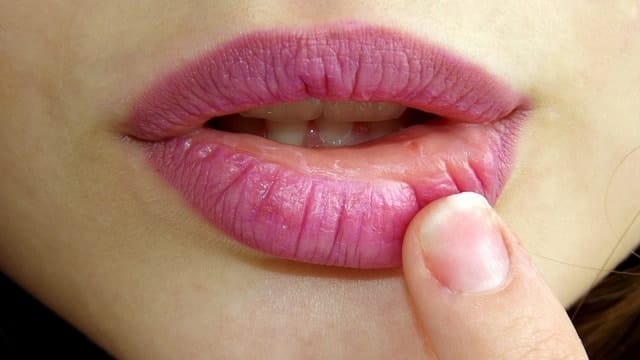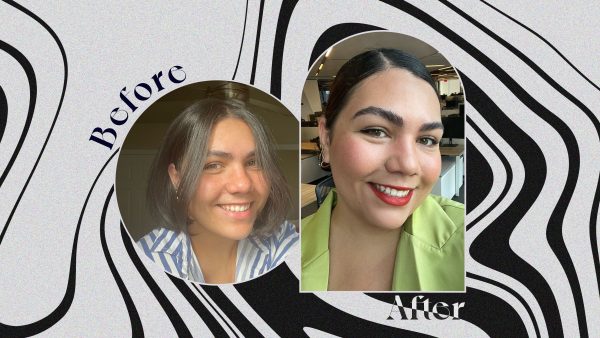Introduction to Dermal Fillers
Dermal fillers have revolutionized the world of non-invasive cosmetic procedures. These injectable treatments offer a solution for those seeking to restore lost volume, smooth out facial wrinkles, and enhance their overall appearance without resorting to surgery. As we age, our skin naturally loses volume and elasticity, leading to the formation of wrinkles and creases. Dermal fillers provide a way to combat these signs of aging effectively.
These are all injectable products. Each is FDA Approved and has its own unique formula to achieve the desired results.
What are Dermal Fillers?
Dermal fillers are injectable fillers designed to address various cosmetic concerns. These non-invasive treatments involve a filler injected into the skin to help restore lost volume, smooth out facial wrinkles, and enhance the overall appearance of the face. Dermal fillers are made from various materials, including hyaluronic acid, poly-L-lactic acid, and calcium hydroxylapatite. Each type of filler has its unique properties and benefits, making them suitable for different treatment areas and desired outcomes.

The Science Behind Dermal Fillers
Dermal fillers work by adding volume to the treated areas, effectively filling in wrinkles and creases immediately. Some fillers, like those containing hyaluronic acid (HA), attract and retain moisture in the skin, providing hydration and a plumping effect. Others, such as poly-L-lactic acid (PLLA) fillers, stimulate collagen production over time, leading to longer-lasting results.
Sculptra: The Collagen Stimulator for Collagen Production
Sculptra is a type of dermal filler made from (PLLA). This biocompatible substance has been used in medical applications for years, including dissolvable stitches and bone screws. When injected into the deeper layers of the skin, Sculptra works by stimulating collagen production, gradually restoring lost volume and smoothing out facial wrinkles.
How Sculptra Works
Sculptra dermal fillers work differently from other facial fillers. Instead of providing immediate volume, Sculptra stimulates the body’s natural ability to produce collagen. This process takes time, with optimal results typically seen after several weeks to months. The gradual nature of Sculptra’s effects contributes to a more natural-looking rejuvenation.
Benefits of Sculptra
One of the main advantages of Sculptra is its long-lasting results. While individual experiences may vary, many patients enjoy the benefits of Sculptra for up to two years or more. This longevity makes it an attractive option for those seeking a more permanent solution to volume loss and facial wrinkles.
Restylane: Instant Hydration and Volume with Hyaluronic Acid
Restylane is a popular line of dermal fillers made from hyaluronic acid. Hyaluronic acid is a naturally occurring substance in the human body, found in high concentrations in the skin and connective tissues. Restylane fillers are designed to mimic the body’s own HA, providing immediate hydration and volume to the treated areas.
How Restylane Works
When injected into the skin, Restylane attracts and binds to water molecules, instantly adding volume and smoothing out wrinkles and creases. The hyaluronic acid in Restylane also helps to improve skin hydration, contributing to a more youthful appearance.
Benefits of Restylane
Restylane offers immediate results, making it an excellent choice for patients seeking instant gratification. The HA-based fillers in the Restylane line come in different concentrations, allowing for customized treatments tailored to specific facial areas and individual needs.
Choosing Between Sculptra and Restylane
The choice between Sculptra and Restylane depends on several factors, including the patient’s specific concerns, desired timeline for results, and long-term goals. Both fillers have their unique advantages and can be effective in treating wrinkles and restoring lost volume. Recovery time, the ability to add volume, the ability to treat wrinkles and moderate lines through volume restoration at the treatment site…these are all things both can produce. But there are differences.
Sculptra: Ideal for Gradual, Long-lasting Results
Sculptra is an excellent choice for patients looking for a more gradual, natural-looking improvement in facial volume. It’s particularly effective for treating areas of significant volume loss, such as the cheeks and temples. The collagen-stimulating effects of Sculptra can lead to longer-lasting results compared to some other fillers.
Restylane: Perfect for Immediate Results and Targeted Treatments
Restylane is ideal for patients seeking immediate improvement in specific areas, such as nasolabial folds, marionette lines, or lip enhancement. The various products in the Restylane line allow for precise targeting of different areas, from superficial lines to deeper creases.
Key Differences Between Sculptra and Restylane
Understanding the differences between Sculptra and Restylane can help patients make an informed decision about which filler is best suited for their needs.
Composition and Mechanism of Action
Sculptra is made from poly-L-lactic acid (PLLA), while Restylane is composed of hyaluronic acid (HA). This fundamental difference in composition leads to distinct mechanisms of action. Sculptra stimulates collagen production for longer-lasting results, while Restylane provides immediate hydration and volume.
Treatment Areas
Sculptra is typically used for deeper layers of the skin and larger areas, such as the cheeks and temples. Restylane, on the other hand, is versatile and can be used for both superficial wrinkles and fine lines, as well as deeper creases and volume loss in various facial areas.
Timeline of Results
Sculptra’s results develop gradually over several weeks as production of collagen increases. Restylane, being an HA-based filler, provides quick results that can be seen right after the treatment session.
Longevity of Results
While individual experiences may vary, Sculptra’s results can last up to two years or more. Restylane typically lasts between 6 months all the way to 18 months, depending on the specific product used and the treatment area.
Alternatives to Sculptra and Restylane
While Sculptra and Restylane are popular choices, there are other facial fillers available that may be suitable for some patients. These include:
Juvederm
Juvederm is another line of HA-based fillers that offer various formulations for different treatment areas. The Juvederm line includes products like Juvederm Ultra and Juvederm Ultra XC, which are designed to treat moderate to severe facial wrinkles and folds. We love Juvederm as well! Schedule your Juvederm session today here.
Radiesse
Radiesse is a dermal filler injected into the skin, made of calcium hydroxylapatite microspheres suspended in a gel carrier. It provides immediate volume and also stimulates production of collagen over time.
Belotero
Belotero is an HA-based filler that is particularly well-suited for treating fine lines and superficial wrinkles. Its unique formulation allows for smooth integration into the skin.
Treatment Process and Timeline
The treatment process for both Sculptra and Restylane is relatively straightforward and typically takes between 30 to 60 minutes, depending on the areas and the number of injections required.
Sculptra Treatment
Sculptra treatments usually involve a series of injection sessions spaced about four to eight weeks apart. Most patients require three treatment sessions to achieve optimal results. The effects of Sculptra develop gradually over time, with full results typically visible after several months.
Restylane Treatment
Restylane treatments provide quickly visible results, with the full effect visible right after the injection session. Depending on the treatment area and the specific Restylane product used, touch-up treatments may be recommended to maintain the desired results.
Pre-Treatment Preparation
To ensure the best possible outcomes and minimize the risk of complications, patients should follow these pre-treatment guidelines:
1. Avoid blood-thinning medications and supplements for at least 7 days before treatment.
2. Discontinue the use of retinoids and exfoliants in your skincare routine for a week prior to treatment.
3. Stay hydrated and avoid alcohol consumption for 24 hours before the procedure.
4. Inform your provider of any allergies or medical conditions that may affect your treatment.
Post-Treatment Care and Follow-Up
Proper post-treatment care is essential for optimal results and to minimize the risk of side effects. Here are some general guidelines:
1. Apply cold compresses to the treated areas to reduce swelling and bruising.
2. Avoid touching or massaging the injection sites for at least 24 hours after treatment.
3. Stay hydrated and avoid excessive sun exposure, heat, and strenuous activities for the first 24-48 hours.
4. Follow any specific aftercare instructions provided by your medical professional.
Follow-up appointments may be necessary to check on the progress of the treatment and to make any necessary adjustments. For Sculptra treatments, these follow-ups are typically scheduled every 4-8 weeks until the desired results are achieved.
Potential Risks and Side Effects
Dermal fillers are generally safe when injected by qualified medical professionals, but there are some potential risks and side effects to be aware of:
Common Side Effects
– Mild swelling, bruising, and tenderness at the injection site
– Redness or itching around the treated areas
– Temporary lumps or bumps under the skin
These side effects are typically very mild and resolve on their own within a few days to a week.
Cost and Pricing
The cost of Sculptra and Restylane treatments varies depending on several factors, including:
– The provider’s experience and expertise
– The geographic location of the practice
– The number of syringes or treatments needed to achieve the desired results
On average, Sculptra treatments tend to be more expensive initially but may be more cost-effective in the long run due to their longer-lasting results. Restylane treatments are typically less expensive per session but may require more frequent touch-ups to maintain the results.
To get an accurate estimate of the cost for your specific treatment plan, schedule a consultation with one of our providers. You can book a free consultation at Chin Up Aesthetics by visiting our Free Consultation page.
Conclusion: Making the Right Choice for Your Aesthetic Goals
Both Sculptra and Restylane are effective dermal fillers that can help restore lost facial volume, smooth out wrinkles, and enhance your overall appearance. The choice between these two options depends on your individual needs, desired timeline for results, and long-term aesthetic goals.
Sculptra is ideal for patients seeking gradual, long-lasting results and who are willing to undergo a series of treatments over several months. Its collagen-stimulating properties make it an excellent choice for addressing significant volume loss and achieving a more youthful look over time.
Restylane, on the other hand, is perfect for those who want immediate results and the flexibility to target specific areas with precision. Its hyaluronic acid-based formulation provides instant hydration and volume, making it suitable for a wide range of facial concerns.
Ultimately, the best way to determine which filler is right for you is to consult with a qualified medical professional who can assess your unique needs and recommend the most appropriate treatment plan. At Chin Up Aesthetics, our experienced team of providers can guide you through the decision-making process and help you achieve your desired results.
To learn more about our dermal filler treatments or to schedule a consultation, visit our /locations page to find the Chin Up Aesthetics location nearest you. Let us help you unlock your most confident, youthful self with the power of advanced dermal filler treatments.





